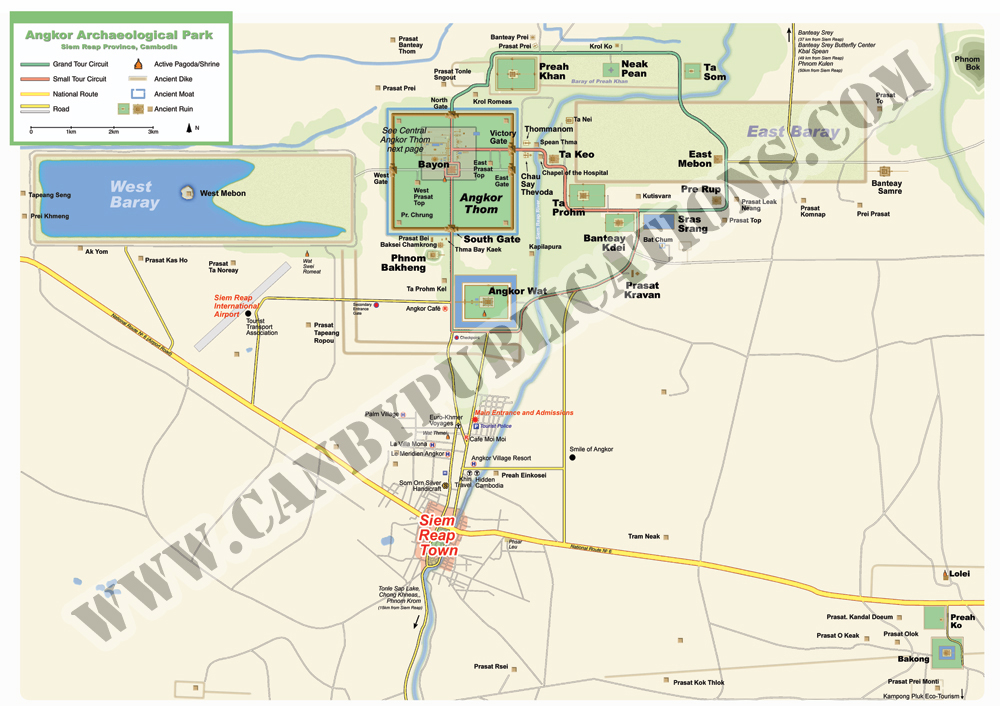I've only spent four days in Cambodia and the country is refusing to let me leave. Maybe it's because Cambdoia doesn't want me to share the secrets of its potent Amok curry with the rest of the world. Maybe the gregarious locals have so much more of their country they still have yet to share. Many the mythological faces of Banyon have cast a spell over me, turning me into immobile stone as they have been for centuries. Whatever the reason, I can't seem to break free.
Earlier in the day, I spoke to my hotel concierge and booked the 2am overnight bus from Siem Reap, Cambodia to Bangkok, Thailand. The plan was to arrive in the Thai capital by early the following morning. And since the OK Villas Hotel is among the nicest establishments I've stayed in to date, I'm confident that the staff will arrange everything without a hitch.
After saying a final goodbye to Amit, Louise, Elaine, Jen, and Chris (collectively my travel partners for nearly all of Vietnam and Laos), I arrive back at the hotel around 1:15am. I quickly strike up a rapport with three Irish lasses who will be joining me on the long journey. As usual, the transportation arrives significantly late, slightly past 3am. I guess I should've known better and stayed at the bar longer. The girls are quickly ushered onto a minivan for transport to the coach, but my ticket has not been confirmed and the driver refuses my entrance. "And your ticket is not even the correct one," the driver says, odd considering all four of us booked the identical bus at the same hotel concierge. Maybe it's the fact that we're all tired and somewhat inebriated, but I swear the three Irish ladies keep looking back at me as they get loaded into the minivan, eyes longing for our reunion, which may never come. Sunday, bloody Sunday, indeed.
Despite the fact that I urged the hotel staff multiple times to make sure my arrangements were set, they never bothered to call to confirm my ticket. And they somehow managed to give me the wrong ticket to boot. I've seen better, more intelligent service at an ATM. As it's the middle of the night, the entire hotel staff is sleeping and after the minivan shuttle takes off, I quickly sprint around the grounds, searching for staff to wake up. I find one lone yawning security guard and frantically explain my problem, flashing the incorrect and unconfirmed ticket. His job profile is not typically dealing with frantic tourist emergencies and he shrugs his shoulders, his expression telecasting, "I wish this small, high-pitched, nasal, bearded fellow had not found me." I am now causing a scene, but I have no qualms, as if I need to wait to take a typical morning bus (around 10am), my whole final day in Southeast Asia will be bust. Several tuk-tuk drivers fly by, noticing my hysterics, and get out to offer assistance. Eventually a motley crew of two tuk-tuk drivers and the security guard reach hold of the bus company and explain the dilemma. Even though half an hour has passed, the actual bus still hasn't left yet, so I guess I need to be grateful that I'm on Southeast Asian time. Once the issue is resolved, I get picked up by the same minivan shuttle and brought to the bus station. As I have the incorrect, unconfirmed ticket, the station manager informs me I will be sitting adjacent to the driver, essentially on the steps of the coach bus, for ten hours. Luckily, when the bus finally arrives at 4am, only two hours late, it is underbooked and I have a proper seat to myself with a blanket and pillow. Or maybe it seems undersold because I rush on ahead the group and grab hold of the first seat I can find.
I know breaking up is hard to do, Cambodia. I didn't want it to end so soon, either. I want to eat more of your delectable fish Amok, walk through more of the ruins of your ancient empires, learn about your staggering resilience from recent atrocities, and enjoy more pilsners with your friendly locals. I love you too, but don't stop me now.







































































